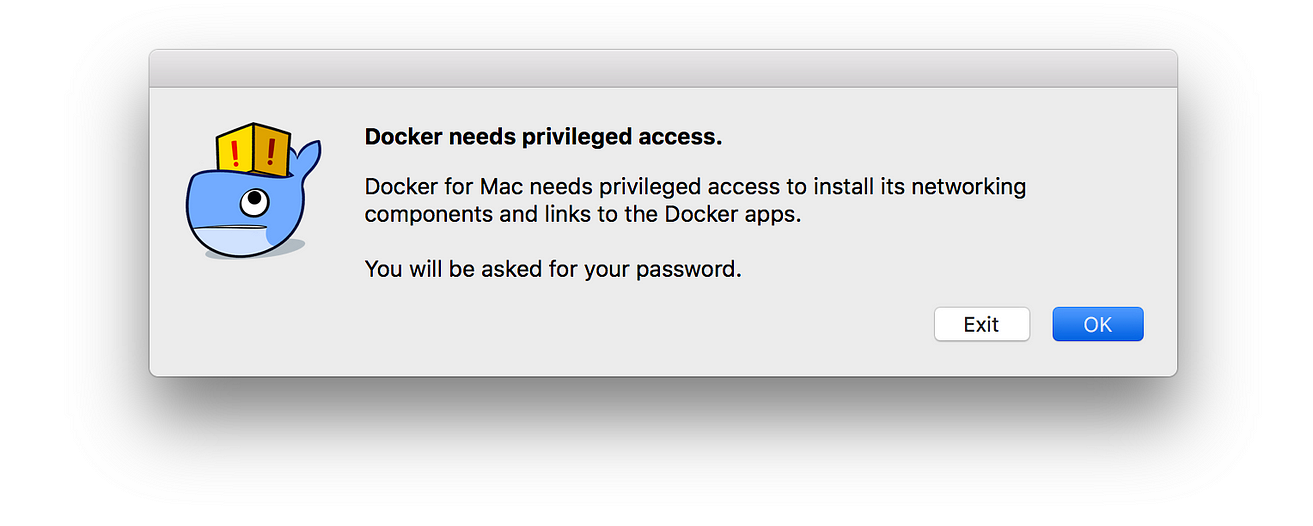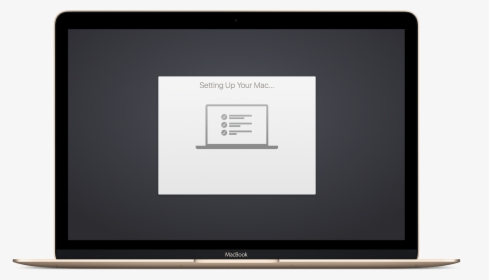I followed various guides and have El Capitan booting just fine. My problem is when trying to install the new docker for mac inside the VM. Since all the guides require locking the CPU type to Core2Duo, the VM detects that the CPU doesn't support the correct features. Docker on El Capitan. Apr 1, 02:35 PM. Categories WebDev. Docker is a tool that makes containers: local environments in which you can run certain versions of software (I haven’t explained this very well). This means that you can, for example, set up a local webserver with the specific versions of PHP, Apache and MySQL.
Docker takes up a lot of space. When we run the container, pull the image, deploy the application, and build our own image, our disk space will be occupied.
If you are also troubled by this problem, let’s take a look at how docker uses disk space and how to recycle it.

The space occupied by docker can be viewed through the following command:
TYPEFour types of disk used by docker are listed:
- Images: space occupied by all images, including pulled images and locally built images.
- Containers: the space occupied by the running containers, indicating the space of each container’s read-write layer.
- Local volumes: the space for the container to mount the local data volume.
- Build cache: mirrors the cache space generated during the build process (only available when using buildkit, available after docker 18.09).
finalRECLAIMABLEIs recyclable size.
Let’s take a look at these types.
Disk usage of container
Every time a container is created, some files and directories are created, such as:
/var/lib/docker/containers/IDDirectory. If the container uses the default log mode, all its logs will be saved to this directory in JSON form./var/lib/docker/overlay2The directory contains the read-write layer of the container. If the container uses its own file system to save data, it will be written to this directory.
Now let’s start with a completely clean system, assuming that docker has just been installed:
First, we start a nginx container:
Run nowdfAfter the command, you will see:
- One image, 126mb
- A container
There is no recyclable space at this time because the container is running and the mirror is being used.

Now, let’s create a 100MB empty file in the container:
View space again:
You can see that the space occupied by the container has increased. Where is the file stored on this machine?

As mentioned above, it is stored in the read-write layer of the container.
When the container is stopped, the space occupied by the container becomes recyclable:
How to recycle it? Deleting a container will delete the space occupied by its associated read-write layer.
You can also delete all stopped containers with one click:
After deleting the container, the image can also be recycled:
abovedocker container pruneThe command is to delete stopped containers. If you want to delete all containers (including stopped and running ones), you can use the following two commands:
Mirrored disk usage
Some of the images are invisible:
- A child image is an intermediate image referenced by other images and cannot be deleted.
- A suspended image, that is, an image that will no longer be used, can be deleted.
The following command lists all mirrors in the suspended state:
Delete this type of image:
Or:
If you want to delete all mirrors, you can use the following command:
Note that the image being used by the container cannot be deleted.
Disk usage of data volume
Data volume is the data storage outside the file system of the container itself.
For example, the application in the container has the function of uploading pictures, which can’t be saved in the container after uploading, because the data in the container will be deleted with the death of the container, so these pictures should be saved outside the container, that is, the data volume.
For example, we run a mongodb container for testing and import a lot of test data, which is not inside the container, but in the data volume, because the data volume is used in the dockerfile of mongodb.
After the test is completed, the mongodb container is deleted, but the test data is still there and has not been deleted.
To delete a data volume that is no longer in use:
Install Docker El Capitan
Or:
Disk usage of build cache
Docker 18.09 introduced buildkit to improve the performance, security, storage management and other capabilities of the construction process.
To delete the build cache, you can use the following commands:
One click cleaning
Through the above instructions, we know that containers, images, and data volumes all providepruneThis subcommand helps us reclaim space.
In fact, the docker system also haspruneThis subcommand can clear the useless space with one click:
It’s a good habit to execute this order regularly.
Translation from:
https://medium.com/better-programming/docker-tips-clean-up-your-local-machine-35f370a01a78
The above is the whole content of this article. I hope it will help you in your study, and I hope you can support developepaer more.
Docker is a tool that makes containers: local environments in which you can run certain versions of software (I haven’t explained this very well). This means that you can, for example, set up a local webserver with the specific versions of PHP, Apache and MySQL that your app or site depends on. I went to a Bristol PHP Training session on Docker a couple of weeks ago, and Nigel took us through all the basic possibilities.
One problem is that I am stuck on OS X 10.11 El Capitan, with which Docker for Mac isn’t compatible, and I couldn’t use the Docker Toolbox installer. Instead I had to follow this article to install Docker on Mac OS X 10.11.
I used VirtualBox to create a new Docker virtual machine, devbox.
Now, when I need to use Docker, I run:
This enters the virtual machine. The key difference with using Docker as a virtual machine is that, where you would use localhost to access your sites, you need to use the virtual machine’s IP address. This can be found using:
Docker El Capitan Download
So far I’ve managed to set up the Wagtail Bakery demo using Docker, and a PHP 5.6 server to run an outdated site that I need to refactor. These are all things that I wouldn’t have had a clue how to do a few months ago, so thanks Nigel, and thanks Docker!